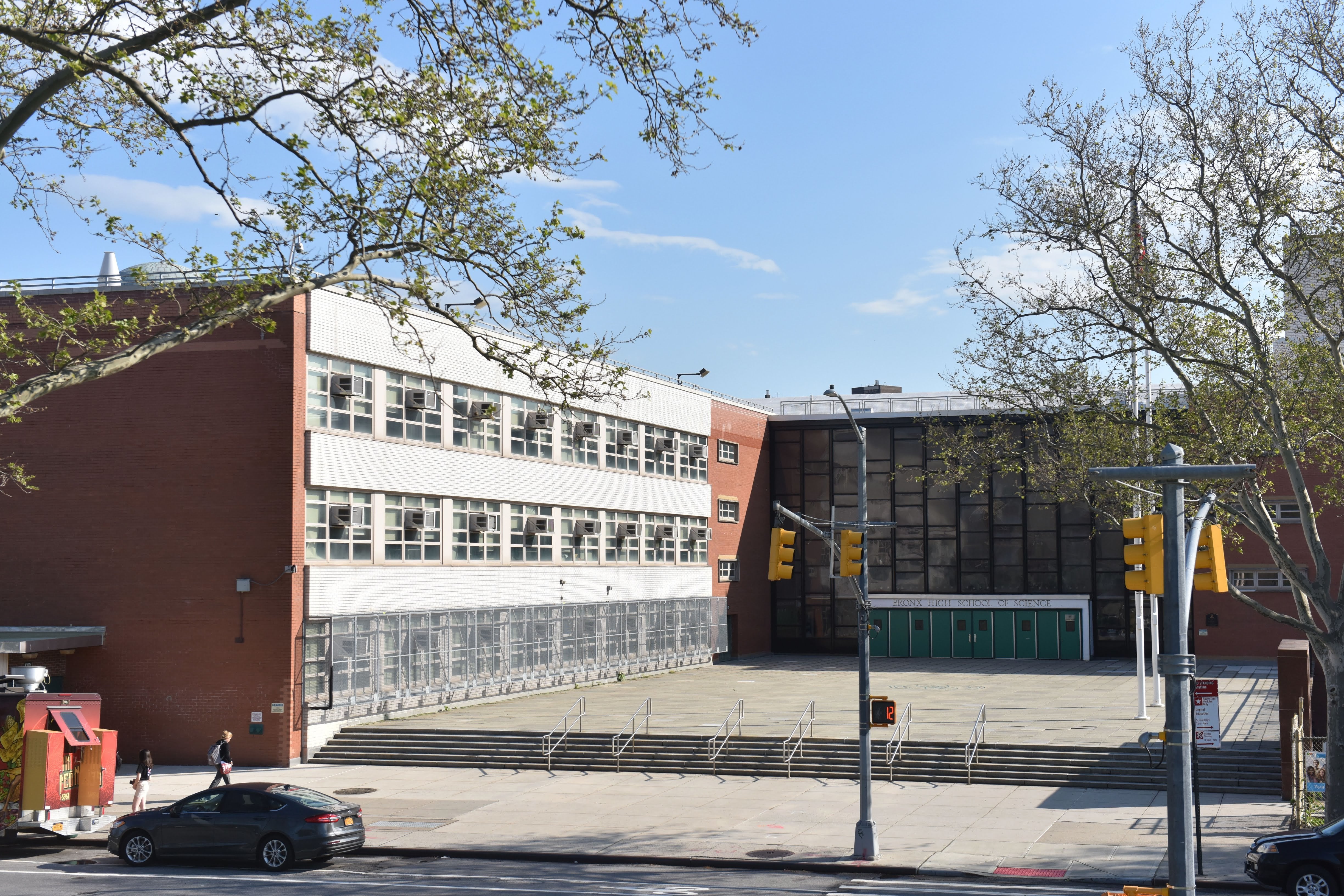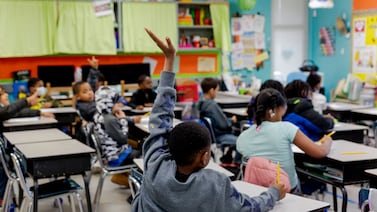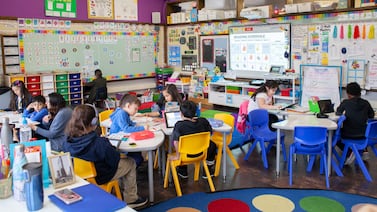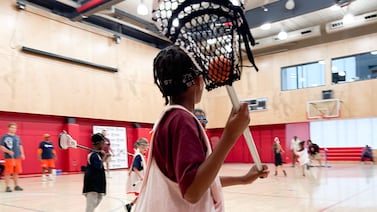The low number of Black and Latino students admitted to New York City’s prestigious specialized high schools hasn’t budged, with those students making up just under 9% of offers for next year’s class, according to education department data released Wednesday.
That’s about the same as the previous year.
The specialized high schools are widely considered the Ivy League of public schools in New York City. But they have long been starkly unrepresentative, with Black and Latino students making up only about 10% of enrollment, compared to about 66% of public school enrollment citywide.
The education department also released data that shows the number of applications to all city high schools is down significantly, amid declining enrollment during the pandemic. About 74,000 students applied to public high schools in New York City, down from almost 78,000 the previous year.
With less competition for seats, more students were accepted into their top-choice schools, the city’s data shows. About 50% of applicants were placed at their first-ranked school, up from 46% the previous year. And 75% of applicants were placed at one of their top three choices — up two percentage points from the year before.
Updated enrollment data released Wednesday also shows dramatic declines this year across other grade levels. The city’s public schools are now home to 827,944 students, excluding charter schools as well as pre-K, which has been expanding in recent years.
That figure represents a 6% decline since last school year and a 9.5% drop since the pandemic hit. Over the last 5 school years, K-12 enrollment is down 13% — or 122,867 students.
The lack of representation at the city’s specialized high schools has been the subject of fierce debate in New York City. Many blame the disparity on how students are admitted: According to state law, admission is based on the result of a single exam. (There are eight schools that rely on the exam, and one performing arts specialized high school that uses auditions.)
Amid the COVID pandemic, the city has offered the admissions test during the school day in every middle school for the last two years — rather than at a central location on the weekends as in the past. However, more access to the Specialized High Schools Admissions Test, or SHSAT, has not resulted in a more representative group of students landing seats.
While the share of Black and Latino students taking the test increased this year by more than five percentage points to almost 47% of test-takers, that did not translate into more students earning a score high enough to qualify for admission. (There is no cut-off score for admission. Rather, offers are based on ranked scores, starting with those earning the highest marks.)
Almost 28,000 students took the entrance test this year — 4,000 more than last year. The previous year saw large declines in the number of students sitting for the exam, which was administered in person at a time when middle schools were closed due to a spike in coronavirus cases.
Sean Corcoran, an associate professor at Vanderbilt University who has studied New York City’s high school admissions processes, noted that the percentage of test-takers compared to all high school applicants hasn’t changed over the last eight years.
“So, the in-school administration does not appear to have moved the dial in terms of overall participation. That said, I suspect we could not have bounced back to pre-pandemic levels as quickly without the in-school administration,” he wrote in an email.
While the previous mayor called on state lawmakers to reform the admissions criteria, current Mayor Eric Adams and Chancellor David Banks have proposed opening more of the coveted schools. Previous expansions have not reversed the sharp segregation. The former administration used the annual release of the SHSAT results to push for changes, but city leaders this year did not release any new policy goals or even acknowledge the disparities in admissions offers.
Instead, the city highlighted that waitlists for all other high schools and middle schools would remain open longer than previous years — until mid-September — to give families more time to potentially land a spot at a more preferred school. Officials said they were making the change in response to parent feedback.
“This is part of our commitment to rebuilding the trust of families and reversing enrollment declines in the coming years. We see this as an opportunity to continue to innovate and tirelessly work towards ensuring our public schools are destinations for high quality learning, and a beacon for families across the country,” First Deputy Chancellor Dan Weisberg said in a statement.
Ultimately, the specialized high schools only admit a fraction of the city’s students, and some advocates have been calling for reforms to the larger high school admissions system to make it fairer. The city is home to one of the most segregated school systems in the country — a reality that many argue is driven by complicated enrollment policies and the practice of “screening,” which allows schools to select students based on their academic records.
The pandemic forced a number of changes aimed at making the process more transparent and admissions more equitable. Some of the new policies drew the ire of parents whose children earned top marks and from Asian American families who worried their children would be disadvantaged. A group called PLACE, or Parent Leaders for Accelerated Curriculum & Education, which advocates for preserving competitive admissions standards, has called for a rally on Friday at the education department’s headquarters to protest the changes.
The education department noted some significant shifts at highly sought-after schools amid the new admissions process. At Townsend Harris High School, for example, 23% of admissions offers went to Black and Latino students, up from 16% the previous year. At Millennium Brooklyn High School, 43% of offers went to Black and Latino students, an increase from 20% the year before. Those schools also participate in the city’s Diversity in Admissions program, which allows schools to give enrollment preference to certain groups of underrepresented students.
Officials did not release comprehensive data on enrollment offers at all of the city’s screened schools. Nyah Berg, who leads the nonprofit New York Appleseed, which advocates for school integration, said it will take more time to know whether recent policy changes are making a dent in segregation.
“It’s going to take a lot longer to unravel some of these barriers to see demographic shifts,” she said.
There could be more changes to the admissions process coming soon. Along with the admissions data, Banks announced in a statement that the education department will share “preliminary” recommendations for additional tweaks and said that communities would have a chance to weigh in on the proposals.
“This is an ongoing process, and we will continue to work with families and partners as we institute improvements to the admissions process,” according to a statement from the education department.
Christina Veiga is a reporter covering New York City schools with a focus on school diversity and preschool. Contact Christina at cveiga@chalkbeat.org.
Alex Zimmerman contributed.






